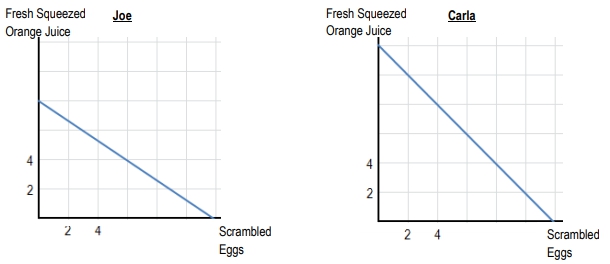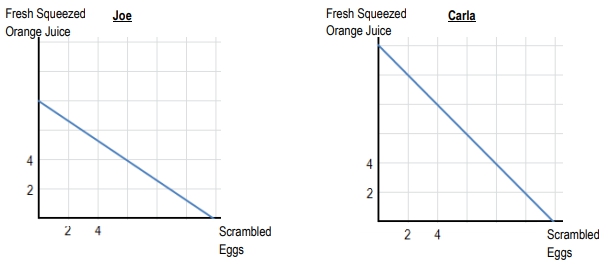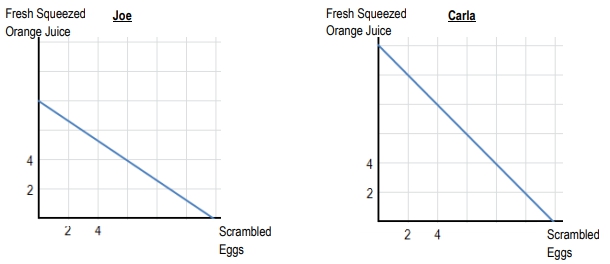So now let's extend our discussion to include the idea that different people, and that could be firms or even countries, have different levels of productivity, which leads them to have different outcomes. A quick note I want to make is that we are going to be using linear models in this module, as you can see on the graphs, because it makes the math easier, and that's just how the textbooks do it. Other than that, the assumptions remain the same: we still have 2 goods, fixed technology, and fixed resources.
So, let's move on to the graphs. Imagine you are the president of the Economics Club at your university and you're organizing a big Economics Bash. Your friend, who just joined a fraternity, is also throwing a big bash. What do we have on our curve? We've got the 2 key essentials. Let's look at the graphs and see what your production possibilities are. As an economics major, if you only produced hunch punch, you could get 20 gallons. However, if you decided to produce only pizza rolls and neglect the hunch punch, which I think is a bad idea, you would get a total of 10 batches of pizza rolls—understanding that 10 pizza rolls wouldn't feed many people.
Now, let's look at your friend's graph for hunch punch. If they were to focus on producing only hunch punch, they would get 30 gallons. Similarly, with the pizza rolls, they could produce 30 batches. It looks like your friend is going to have a much better bash than you, right? They've got the resources and know-how to make both hunch punch and pizza rolls, making their bash more successful.
But what if I told you that you could be even better off than your current situation if you both specialized and traded? That is exactly what I'm going to show you now. Each of you could have a better bash than you could achieve just by yourselves. So let's go ahead and define specialization. Specialization means producing the goods you are best at producing. We need to define how we can determine what you're best at producing. You can produce 20 gallons of hunch punch but only 10 pizza rolls. Are you best at hunch punch or at pizza rolls? What can we say? Yes, you can make more hunch punch, but exactly how valuable is it?
First, let's talk about absolute advantage. Absolute advantage means producing more of a good with the same amount of resources. For instance, both of you have the same amount of time to prepare for this party; who can make more of each good? Regarding the pizza rolls, your friend can make 30 while you can only make 10. The same goes for hunch punch; you make 20 gallons, while your friend can make 30. So, it seems your friend has the absolute advantage in both. You might wonder how can we even trade? How can your weaker production match her production levels? Well, instead of looking for an absolute advantage, we are going to look for a comparative advantage.
Comparative advantage is defined as producing a good at a lower opportunity cost. There's always a comparative advantage when dealing with two separate goods. Someone is always going to have a comparative advantage in one good, and the other person in the other good. We are going to define how we calculate the opportunity cost in the next video. So let's go ahead and follow along.





